Well, i did it and i purchased my first boat, and brought it home yesterday. I thought i looked it over thoroughly but i guess i did not. At the very top there are two tiny holes in the aluminum. Now i was wondering what the best way to fix this is? solder? weld with tig? oxy/acetelene with super alloy 5? (https://www.youtube.com/watch?v=d7nPz4y5IE4) thanks!
You are using an out of date browser. It may not display this or other websites correctly.
You should upgrade or use an alternative browser.
You should upgrade or use an alternative browser.
repairing holes and leak in aluminum boat
- Thread starter smidge
- Start date

Help Support TinBoats.net:
This site may earn a commission from merchant affiliate
links, including eBay, Amazon, and others.
Smidge - PHOTOS will help us help you.
Tiny holes at the top ? Do they leak water ?
fill with epoxy and go boating.
again, the SEARCH feature will provide you with tons of good info.
Tiny holes at the top ? Do they leak water ?
fill with epoxy and go boating.
again, the SEARCH feature will provide you with tons of good info.
sorry i didnt post pics earlier was very busy today. well i got home with some time to take some, and put some water in the boat to see if there are any sort of leaks so there are no surprises later lol. well there were a few tiny leaks, filled the bottom of the boat with 40 or so gallons of water on my inclined driveway and put it at every angle i possibly could to get more water in different areas. Well the leaks were on rivets that had been epoxied before ( go figure :lol: ) but werent anything crazy. Also wondering how i should go about fixing these as well. The owner told me the epoxy was just reinforcment as he spent a lot of time in the ocean. Wondering if i should just remove most of the epoxy and re do everything, It is g flex epoxy he said. Should i just fix what is leaking and call it a day? other than that, i checked out the motor before buying, ran it. its in great condition. checked the plugs, did compression test. The thing is pretty much brand new lol. The original transom wood is still there and seems to be in somewhat decent shape still, and looks like it had been reinforced as well. pics included!
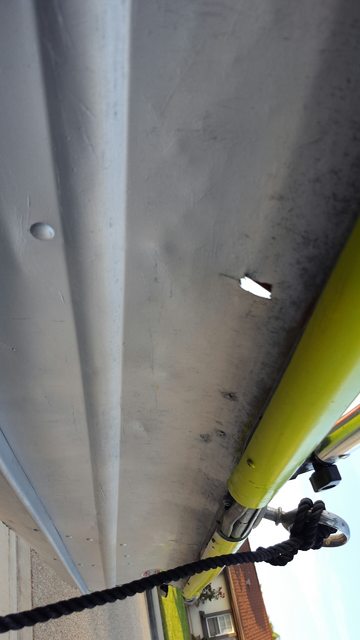

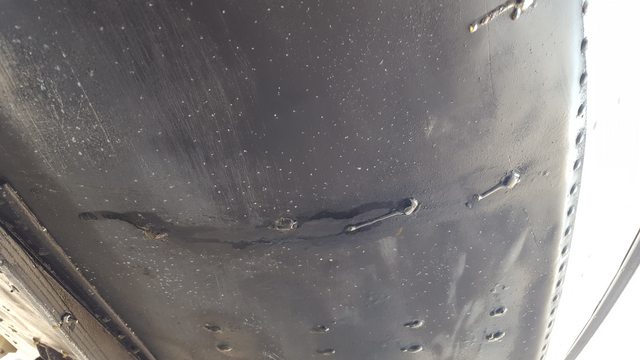
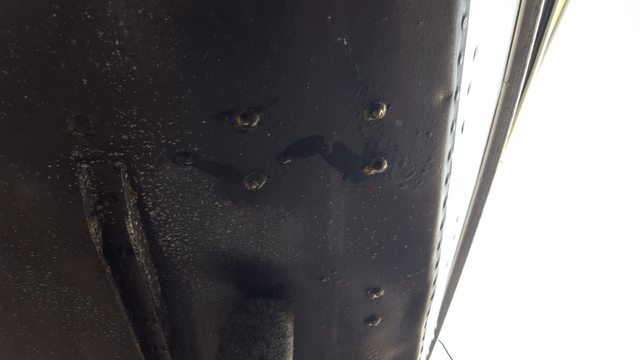
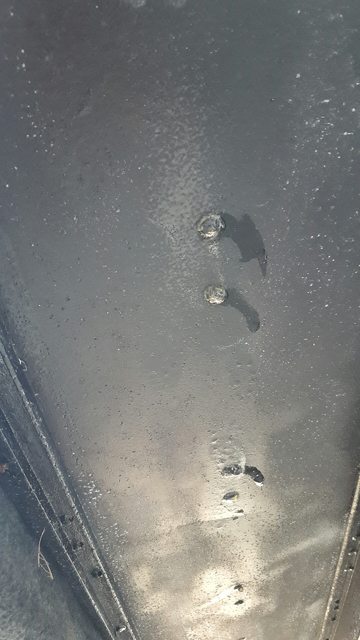
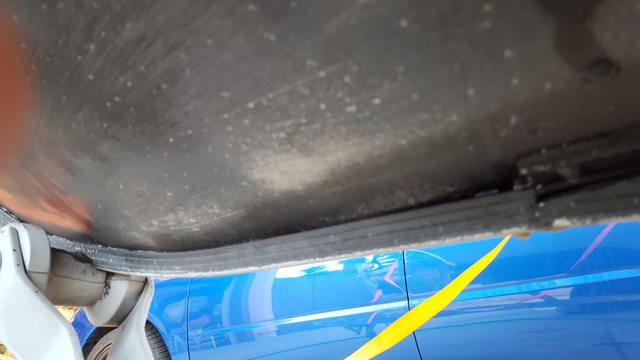
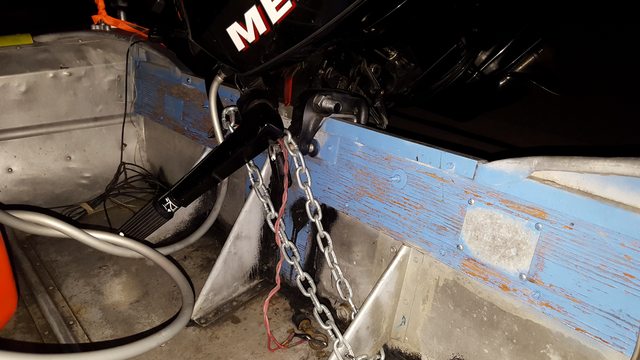
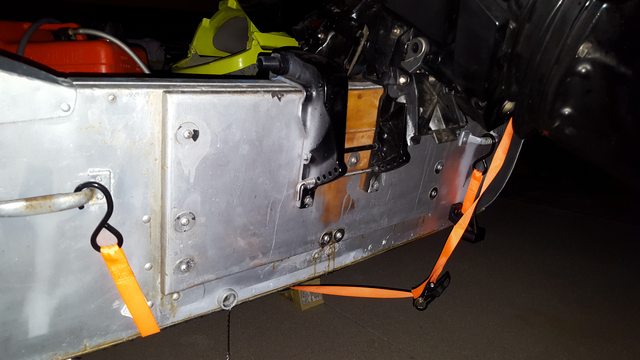








well I think I'm actually going to do it the correct way so that I hopefully don't have to re do it again in a few years.
What size rivets should i buy? What length? should they be soft or hard aluminum as i have read there are two different kinds.
Was going to wire brush the area before installing the rivets, is this necessary? and should i use 5200 as well with the solid rivets?
Also what size should i drill out the hole compared to what rivet i use? Also read of a guy that just uses a sharp chisel and gets under the heads and breaks them off. How easy do you think this would be?
What size rivets should i buy? What length? should they be soft or hard aluminum as i have read there are two different kinds.
Was going to wire brush the area before installing the rivets, is this necessary? and should i use 5200 as well with the solid rivets?
Also what size should i drill out the hole compared to what rivet i use? Also read of a guy that just uses a sharp chisel and gets under the heads and breaks them off. How easy do you think this would be?
Kismet
Well-known member
Smidge? Your choice, of course, but for those tiny little bits, I'd forgo the drilling/riveting/sealing. That amount doesn't present any issue. Consider just sanding down the leak spots and putting your own epoxy on them. It will take minutes, and is impossible to screw up, as opposed to trying to fit a new rivet into a hole you've drilled out.
Just an old guy's opinion. I don't think you have a problem.
Have fun, be safe.
:mrgreen:
Just an old guy's opinion. I don't think you have a problem.
Have fun, be safe.
:mrgreen:
the previous owner tried using g flex and it failed so im just going to replace the rivets, but i have a few question
What size rivets should i buy? What length? should they be soft or hard aluminum as i have read there are two different kinds.
Was going to wire brush the area before installing the rivets, is this necessary? and should i use 5200 as well with the solid rivets?
Also what size should i drill out the hole compared to what rivet i use? Also read of a guy that just uses a sharp chisel and gets under the heads and breaks them off. How easy do you think this would be?
What size rivets should i buy? What length? should they be soft or hard aluminum as i have read there are two different kinds.
Was going to wire brush the area before installing the rivets, is this necessary? and should i use 5200 as well with the solid rivets?
Also what size should i drill out the hole compared to what rivet i use? Also read of a guy that just uses a sharp chisel and gets under the heads and breaks them off. How easy do you think this would be?

$42.80
$50.80
Attwood 5557-PV12A7 All-Round LED Fold Down Navigation Light Black Base, 12-Inch
Amazon.com

$57.77 ($5.25 / Fl Oz)
$64.99 ($5.91 / Fl Oz)
Rust-Oleum 207013 Marine Boat Bottom Antifouling Paint, 1 Quarts (Pack of 1), Blue, 11 Fl Oz
Vera Tools

$29.39
$34.59
Seachoice Cast Aluminum “S” Dock Cleat, Corrosion Resistant Aluminum, 12 in.
Amazon.com

$12.88
$18.50
Flambeau Outdoors 4510 Super Half Satchel Soft Bait Organizer 15x8x6.25-Inch
Amazon.com

$29.86 ($4.59 / Ounce)
Hy-Poxy H-455 Alumfast 6.5 oz Rapid Cure Aluminum Putty Repair Kit
Amazon.com

$38.98
$43.45
Shurhold 833 6' Telescoping Extension Handle with 40"-72" Locking Length
Amazon.com

$21.04
$26.00
BOESHIELD T-9 Rust & Corrosion Protection/Inhibitor and Waterproof Lubrication, 12 oz.
Amazon.com

$26.95 ($0.84 / Fl Oz)
Rust-Oleum, Navy Blue, 207002 Marine Topside Paint, 1-Quart, 32 Fl Oz (Pack of 1), 11
Vera Tools

$8.99
$11.95
CURT 52022 6-Inch x 5-1/2-Inch x 3-1/4-Inch Lockable Trailer Breakaway Battery Case
Amazon.com

$224.85
$267.79
Seachoice Folding Deck Chair, White, Marine Vinyl, Folds For Easy Storage
Amazon.com

$104.98 ($104.98 / Count)
Ever-Ready Industries Premium Trauma First Aid Kit for Outdoors, Workplace, and Home - Exceed OSHA Guidelines and ANSI 2009 Standards - 240 Pieces - Includes Bonus Travel Kit
EVER-READY INDUSTRIES

$19.89 ($19.89 / Count)
$26.88 ($26.88 / Count)
First-Aid-Kit-for-Car-Home-Travel-Camping-Businesses, 263pcs Compact Waterproof Hard Case, Public Emergency All Purpose Medical Kit - Perfect for Survival, Vehicles,Boat, Sports, Hiking (PUMIER)
Pumier Medical

$44.88
$49.99
Plano Angled Tackle System with Three 3560 Stowaway Boxes, Fishing Tackle Storage, Premium Tackle Storage
Amazon.com

$45.99 ($0.14 / Count)
$49.99 ($0.15 / Count)
330 Piece First Aid Kit, Premium Waterproof Compact Trauma Medical Kits for Any Emergencies, Ideal for Home, Office, Car, Travel, Outdoor, Camping, Hiking, Boating (Red)
THRIAID

$21.00 ($0.66 / Fl Oz)
$24.17 ($0.76 / Fl Oz)
STAR BRITE Instant Hull Cleaner - 32 Oz Gel Spray - Easily Remove Stains, Scum Lines & Grime on Boat Hulls, Fiberglass, Plastic & Painted Surfaces - Easy to Use Formula (096132)
Amazon.com
look at the rivets in your boat - - - that should give you an idea
of what size to go with. Use soft aluminum rivets, easier to work with
and get water tight.
If you get 3/16" shaft rivets, drill a 3/16" hole.
I think the general consensus here is for you to get some scrap metal
and practice practice practice with rivets prior to possibly messing up your boat.
Get some regular rivets as well as pop rivets. If you don't have a rivet gun,
Harbor Freight has them. Drill some holes and practice with single layers of metal
as well as putting a few pieces together. It is a snap once you do it a few times.
Remove as much of that FlexSeal crap as you can. The hype on TV is a SCAM.
3M5200 around rivets is the common fix for leaking rivets.
Two types of 5200: Regular - takes 2 days to set up and 7 days to cure.
Fast Cure - takes a couple of hours to set up and a day or so to cure. Your call.
AVOID 100% SILICONE !!!! it actually promotes corrosion - don't use it.
of what size to go with. Use soft aluminum rivets, easier to work with
and get water tight.
If you get 3/16" shaft rivets, drill a 3/16" hole.
I think the general consensus here is for you to get some scrap metal
and practice practice practice with rivets prior to possibly messing up your boat.
Get some regular rivets as well as pop rivets. If you don't have a rivet gun,
Harbor Freight has them. Drill some holes and practice with single layers of metal
as well as putting a few pieces together. It is a snap once you do it a few times.
Remove as much of that FlexSeal crap as you can. The hype on TV is a SCAM.
3M5200 around rivets is the common fix for leaking rivets.
Two types of 5200: Regular - takes 2 days to set up and 7 days to cure.
Fast Cure - takes a couple of hours to set up and a day or so to cure. Your call.
AVOID 100% SILICONE !!!! it actually promotes corrosion - don't use it.
Captain Ahab
Well-known member
Remember water pushing up is gonna come with pressure you do not get when filling the boat
Captain Ahab
Well-known member
Put it in the water and see how bad it is
I just did my newly acquired 1440 Lowe jon boat.
I used 3/16 closed aluminum rivets with steel mandrels (I also bought 1/4 ones in case I screwed up drilling the old ones out). Also used a long handled puller (not the small hand puller).
My hull thickness was something like 1/16 so I bought the rivets that had a minimum 1/8th range (I forget the technical term for the range of thicknesses a rivet can accommodate).
I used 3M 4000UV sealant instead of the 5200 after looking over the specs of both (no surface prep needed for the 4000; can't remember about 5200).
It took me forever to drill out the old rivet in part because I was petrified of making the hole too large and so was drilling at a glacial pace. One thing that gave me comfort was the fact that the 3/16 rivets were actually slightly larger than 3/16 giving me a little room for error.
I did use a small chisel to help get the head off after the core of the rivet was drilled.
Took the boat out this past weekend and everything seemed fine.
Good luck! In hindsight, I shouldn't have been so worried but being new to motorboats (lifelong canoer with 6 canoes out back in the stable), I was pretty gripped drilling into my boat!
I used 3/16 closed aluminum rivets with steel mandrels (I also bought 1/4 ones in case I screwed up drilling the old ones out). Also used a long handled puller (not the small hand puller).
My hull thickness was something like 1/16 so I bought the rivets that had a minimum 1/8th range (I forget the technical term for the range of thicknesses a rivet can accommodate).
I used 3M 4000UV sealant instead of the 5200 after looking over the specs of both (no surface prep needed for the 4000; can't remember about 5200).
It took me forever to drill out the old rivet in part because I was petrified of making the hole too large and so was drilling at a glacial pace. One thing that gave me comfort was the fact that the 3/16 rivets were actually slightly larger than 3/16 giving me a little room for error.
I did use a small chisel to help get the head off after the core of the rivet was drilled.
Took the boat out this past weekend and everything seemed fine.
Good luck! In hindsight, I shouldn't have been so worried but being new to motorboats (lifelong canoer with 6 canoes out back in the stable), I was pretty gripped drilling into my boat!
See PM, as I have a good supply of 3/8" to 5/8" rivets in 1/16" increments I can sell you cheap ...smidge said:What size rivets should i buy? What length? should they be soft or hard aluminum as i have read there are two different kinds. Was going to wire brush the area before installing the rivets, is this necessary? and should i use 5200 as well with the solid rivets? Also what size should i drill out the hole compared to what rivet i use?
Having just done HUNDREDS for my complete transom removal, this worked for me!smidge said:Also read of a guy that just uses a sharp chisel and gets under the heads and breaks them off. How easy do you think this would be?
1) Put DOT in center of each rivet with Sharpie marker
2) Use prick punch (60-degree point) to mark the center
3) Follow-up w/ center punch (90-degree point) strikin it hard for a good CENTERED dimple where you'll start the drill
4) Drill in 1/16" or so w/ small bit
5) Go in with bit sized just UNDER the rivet diameter, but NOT past the skin the rivet is through
6) Use squared edge chisel or similar to 'knock' the rivet head off ...
Summary - I marked and drilled through the head (wider part), not the tail. By doing so on 95% of them I didn't scar or deform the hole the rivet was through.
FYI, as a former machinist, I stress the use of both the prick AND center punch, as even if/when you go to punch with the center punch, if you realize your mark from the prick punch is somewhat 'not centered', you can "tip" the center punch a little towards the direction you need to favor - to be truly centered. Lesson ... there is a valid reason why various tools exist in the shape of which they are designed and sequence in which they should be used, for best results :wink: .
richg99
Well-known member
Just did my first very small rivet job. Nothing below the water line, so I was able to use pop rivets, filled with 3M5200. I added a PVC pipe piece to extend the leverage of the handles of the pop rivet gun. That made the job a LOT easier.
Cutting the old rivets off was accomplished with a wood chisel, as that is all that I had here. It was easier than I expected.
I did run into some problems when I needed some longer rivets. I originally bought the rivets that I needed at an ACE Hardware. When I found that I needed longer rivets for a couple of locations, ACE was out.
Went to Lowes and bought a brand name supply of the longer rivets. First one that I tried jammed into my gun. Seems every manufacturer has their own specs. I wound up using Stainless Steel nuts and bolts for the last two locations, since I had no other stores from which to buy the right sized rivets that would fit my particular gun. I was afraid to even try the second long rivet, since it might have permanently stuck in my gun.
All in all, I was happy with riveting.
richg99
Cutting the old rivets off was accomplished with a wood chisel, as that is all that I had here. It was easier than I expected.
I did run into some problems when I needed some longer rivets. I originally bought the rivets that I needed at an ACE Hardware. When I found that I needed longer rivets for a couple of locations, ACE was out.
Went to Lowes and bought a brand name supply of the longer rivets. First one that I tried jammed into my gun. Seems every manufacturer has their own specs. I wound up using Stainless Steel nuts and bolts for the last two locations, since I had no other stores from which to buy the right sized rivets that would fit my particular gun. I was afraid to even try the second long rivet, since it might have permanently stuck in my gun.
All in all, I was happy with riveting.
richg99
BassBlaster
Well-known member
Just rebuck the existing rivets, coat the bottom of the boat with steelflex and it will never leak again.
BassBlaster - I disagree with the "it will never leak again".
My 1648 has SteelFlex and it leaked like an old sock through the SteelFlex.
I could not rebuck the rivets as the metal floor is pop riveted to the frame.
I had no choice but to seal from the outside. Coating, Preserving, and Painting
your boat is strictly your personal choice with the information you are comfortable with.
Personally, from my one and only experience with SteelFlex, I will never endorse it
as a "stop leak" or "leak seal" . . . but, for protection from corrosion, yes.
My 1648 has SteelFlex and it leaked like an old sock through the SteelFlex.
I could not rebuck the rivets as the metal floor is pop riveted to the frame.
I had no choice but to seal from the outside. Coating, Preserving, and Painting
your boat is strictly your personal choice with the information you are comfortable with.
Personally, from my one and only experience with SteelFlex, I will never endorse it
as a "stop leak" or "leak seal" . . . but, for protection from corrosion, yes.
Attachments
BassBlaster
Well-known member
Its not designed as a stop leak. Its purpose is to make the bottom of the boat very slick so that there is less drag in the water. That said, you get the added bonus of it sealing the bottom of the boat. My guess is that whatever you used to seal those rivets allowed the steelflex to flex and crack and that's why you got leaks. Im guessing if you had removed those rivets since you they wernt the type that could be rebucked, replaced them with a tiny bit of 5700 on the stems and then coated with steelflex, you would not have had any leaks. You really cant say a product failed to do its job when you didn't use the product properly. I can assure you 100%, if you were getting water through the steelflex coating, you did something wrong. Its not a porous product and water dosnt pass through it. My last project was a boat that was over 30 years old. Had multiple leaks throughout the boat. All the rivets that leaked were rebucked. All the holes or cracks were welded and then a coat of steelflex. The boat still dosnt get a drop of water in it to this day. If you make your repairs properly, it shouldn't leak even without steelflex.
Bass - I did not do anything to this boat.
I bought it last year. The rivets are factory installed.
The boat hull is extremely solid, sound and flex free.
The P/O went to great pains to put on the SteelFlex correctly.
This is why I am perplexed as to why they leak in the first place.
The boat has always been in Central Florida - calm lake waters only.
Yes, I agree with the SteelFlex as you stated . . . .
I just disagree as to your statement of it will never leak again.
When I had an issue of just the opposite.
tight lines
I bought it last year. The rivets are factory installed.
The boat hull is extremely solid, sound and flex free.
The P/O went to great pains to put on the SteelFlex correctly.
This is why I am perplexed as to why they leak in the first place.
The boat has always been in Central Florida - calm lake waters only.
Yes, I agree with the SteelFlex as you stated . . . .
I just disagree as to your statement of it will never leak again.
When I had an issue of just the opposite.
tight lines
Similar threads
- Replies
- 4
- Views
- 268
- Replies
- 29
- Views
- 2K
















































